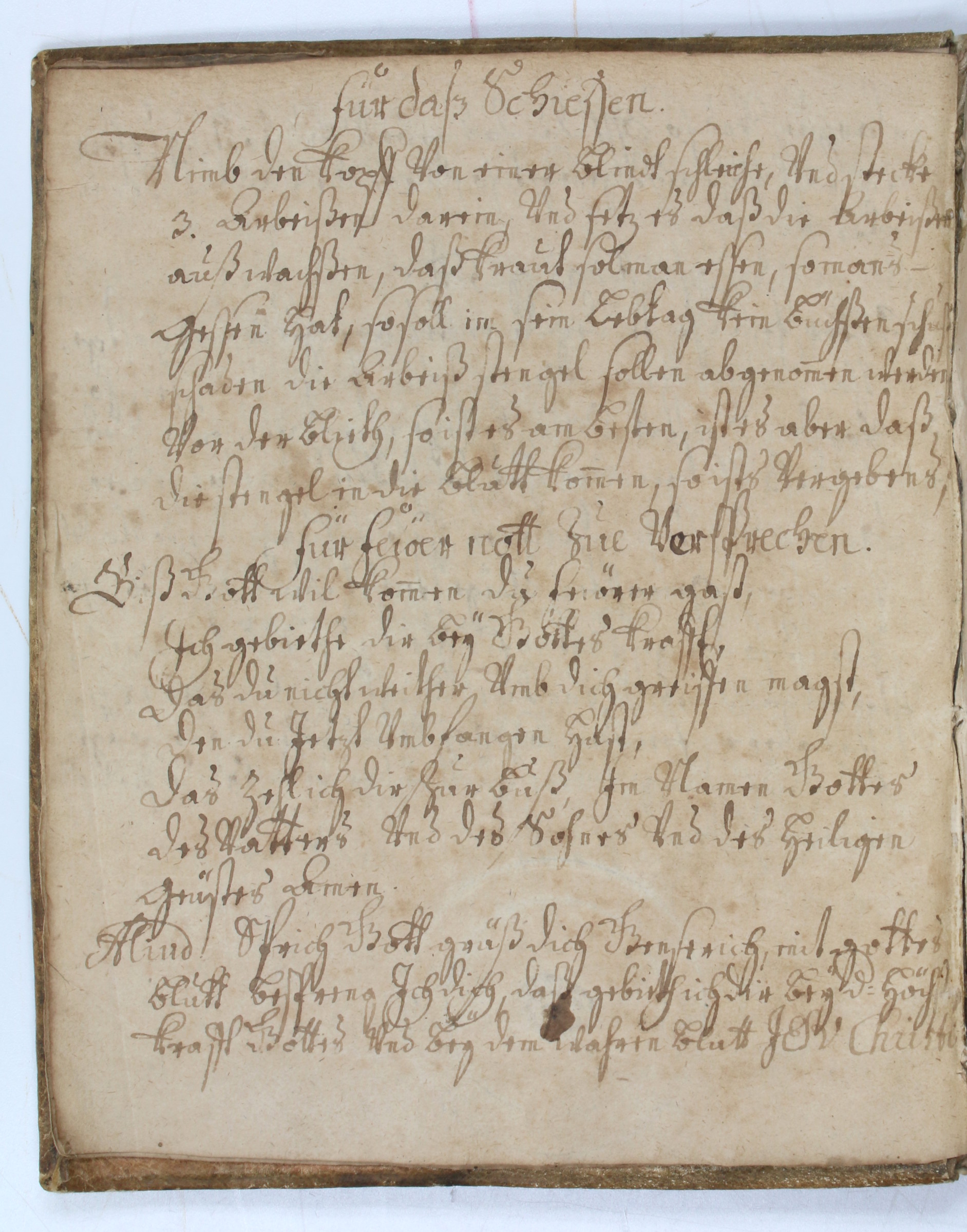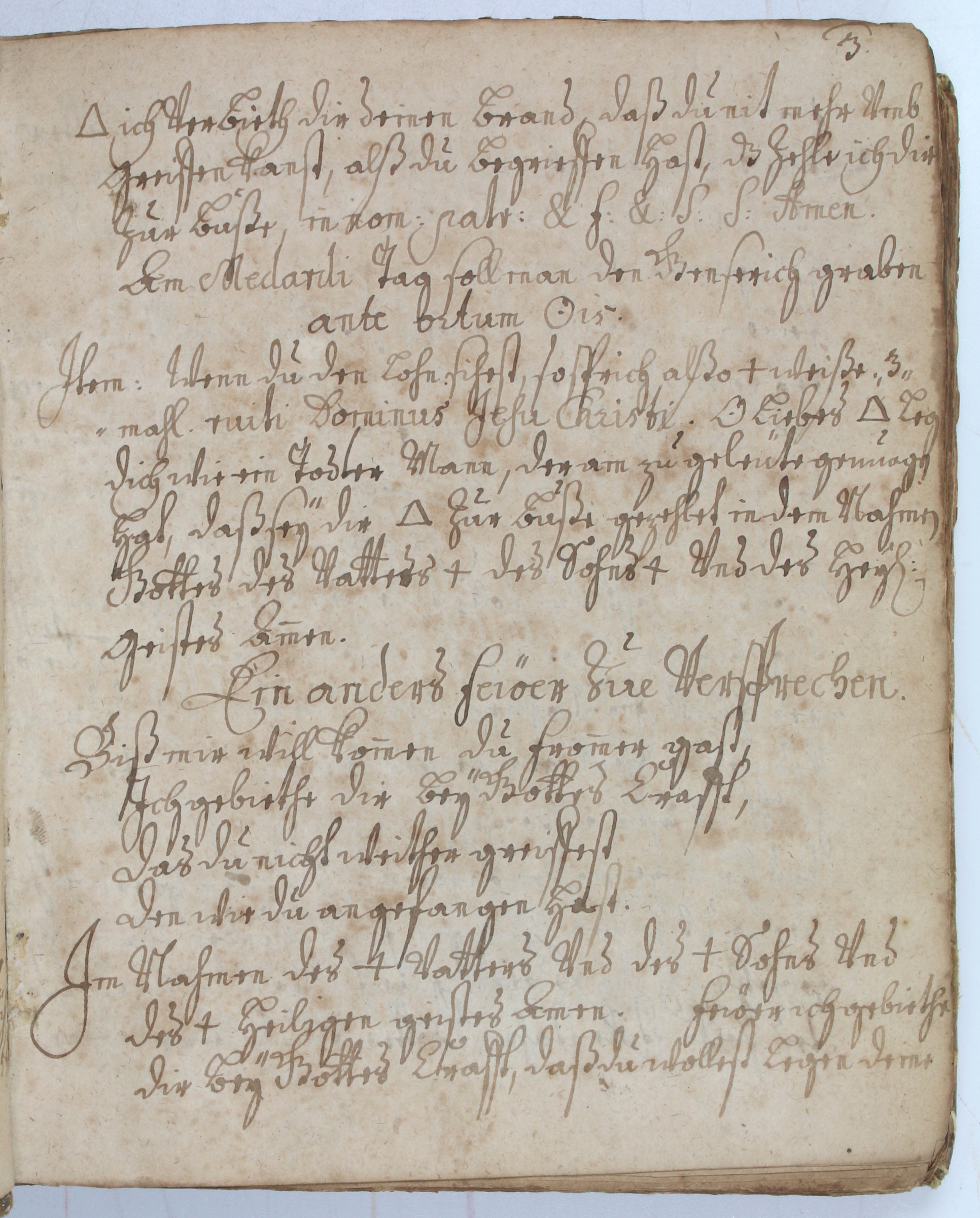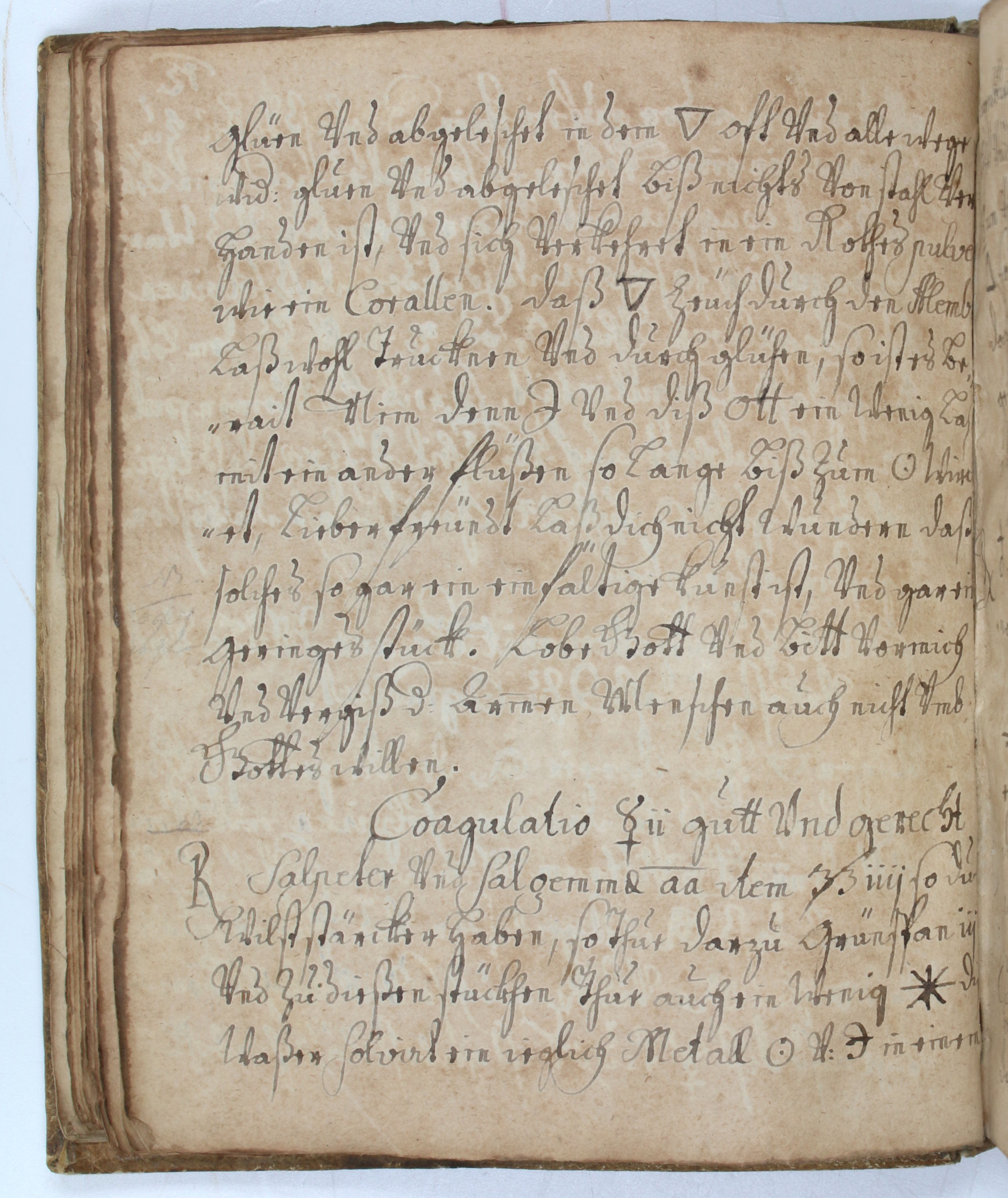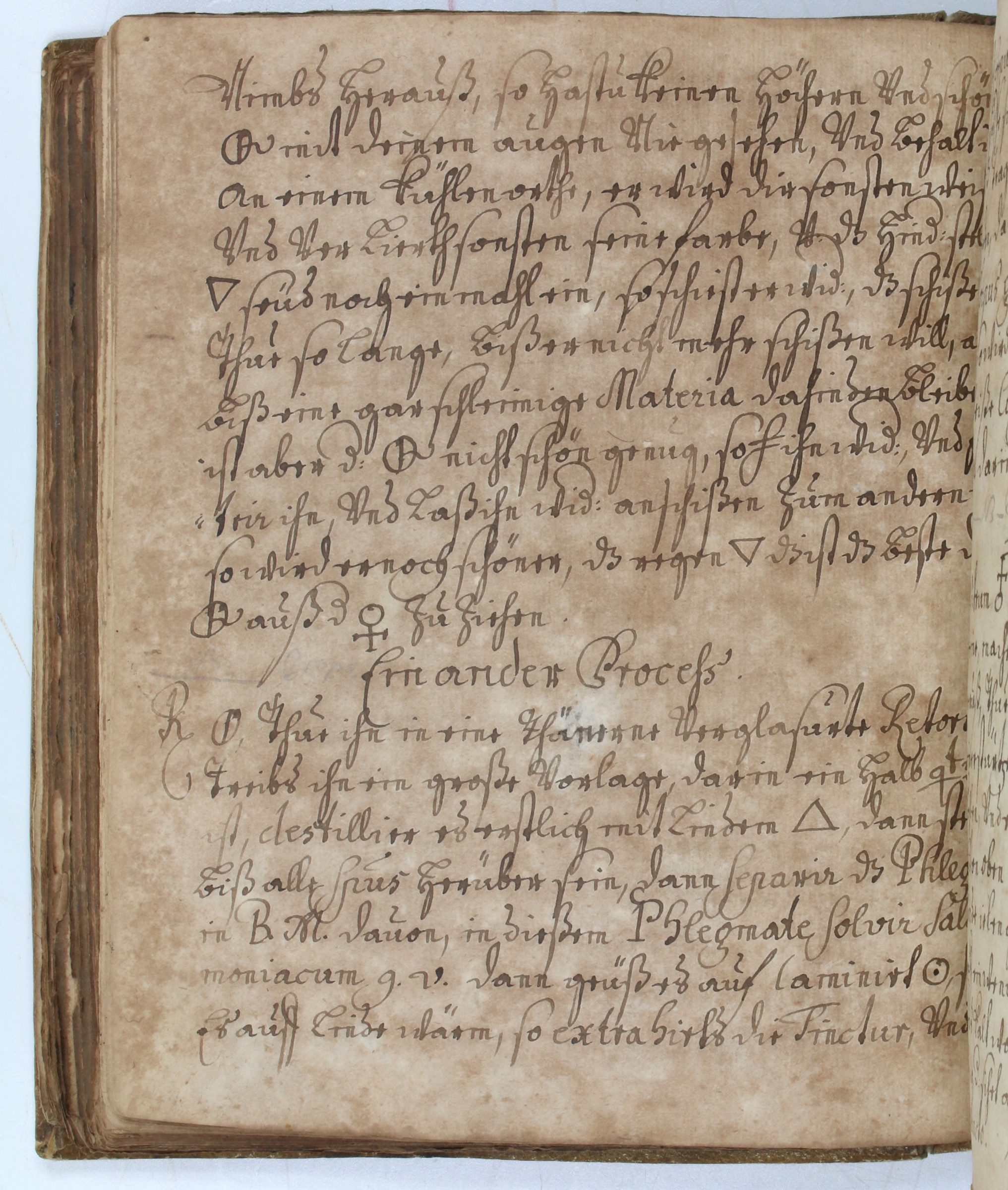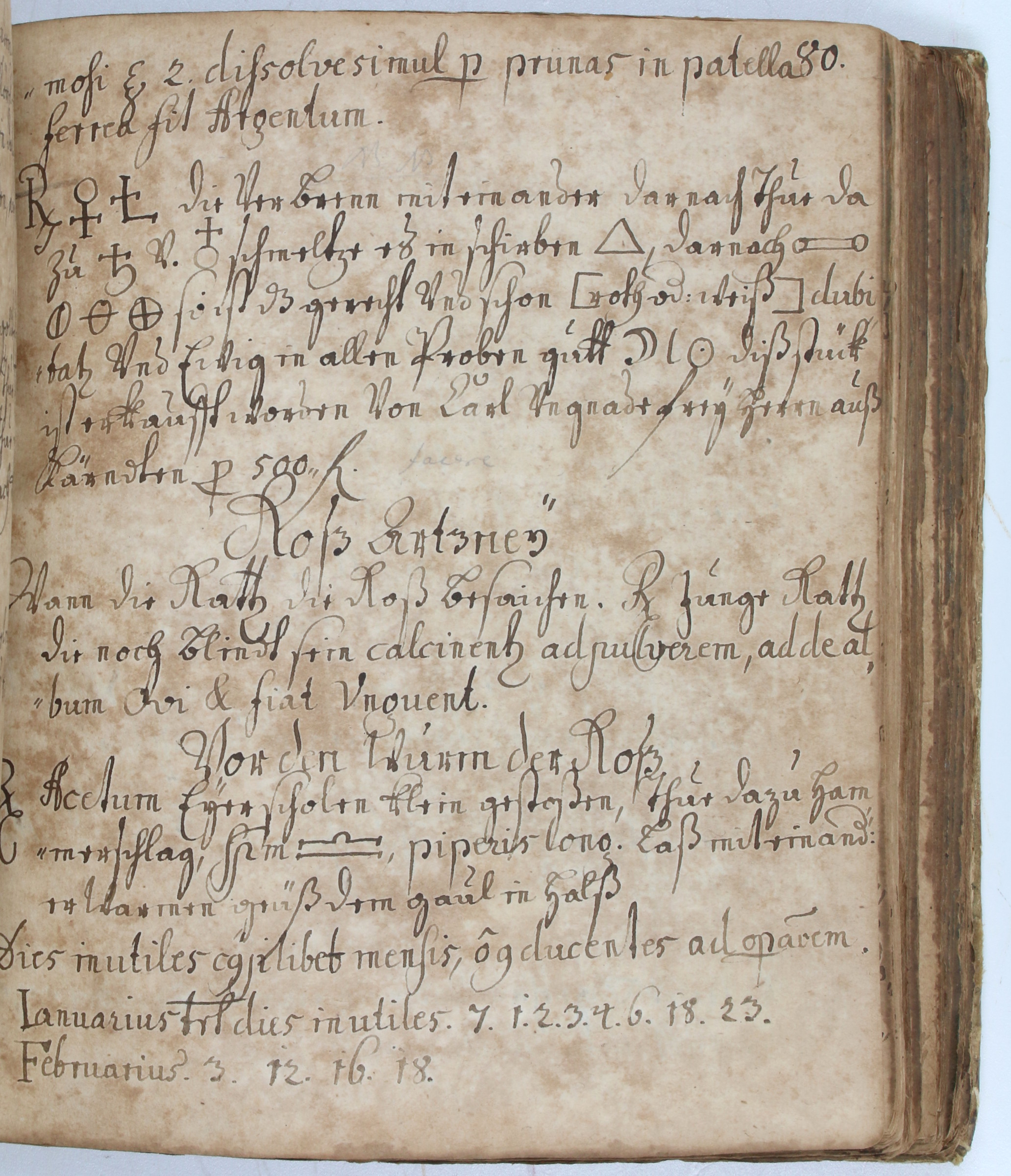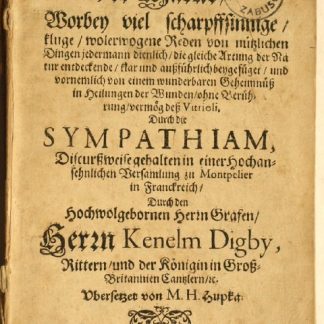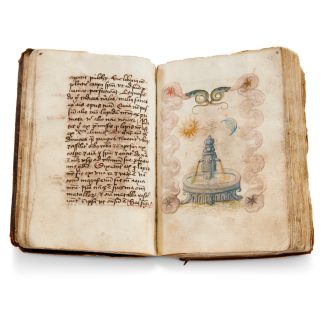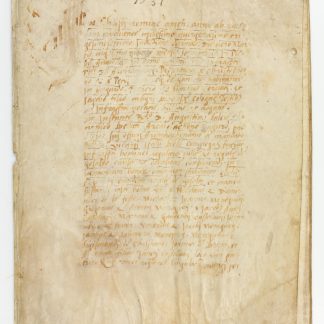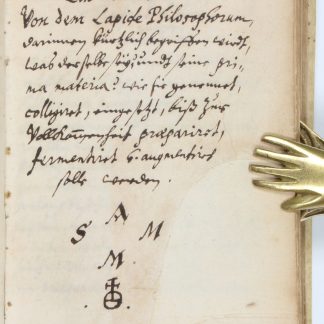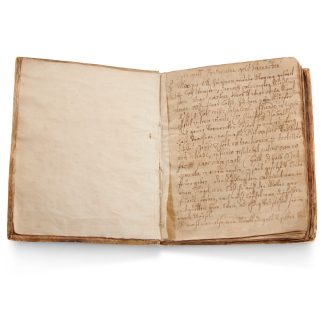The alchemical manual of the chief physician to Emperor Leopold I
Autograph alchemical manuscript notebook.
4to (166 x 195 mm). German and Latin autograph manuscript on paper, signed at the end. (2), 158 ff. with 3 illustrations (on leaves 2r, 68v and 151v). Numerous contemporary manicules and pencil notes. Contemporary blind-tooled vellum over pasteboards.
€ 35.000,00
Hertodt's working alchemical notebook, written in a fluid mixture of German and Latin. The manuscript contains detailed instructions on alchemical processes, including the transmutation of lesser substances into gold (with first-person remarks on experiments), alongside a cryptographic alphabet and a list of inauspicious dates for the practice of alchemy. It is signed on the final page by its author "Dr. Hertodt" (f. 158r).
The first of the numerous recipes, experiment records, and alchemical notes is: "Ein gutt Particular gold zu machen" (f. 1r-v). We also find recipes with instructions on "Ein oleum Philosophorum zu bereiten" (f. 7r), "Crocum Martis [alchemical symbol for iron]" - ferric oxide (f. 9v), "Oleum sulphuris" - or fuming sulphuric acid (f. 10v), "Augmentum auris [alchemical symbol for gold]" (f. 18v), the process of coagulation of mercury (f. 23r), a recipe for making bismuth (f. 34r), "Ein schön und treffliche Particular Tinctur ex [alchemical symbols for iron, copper and gold] aus Fratri Basilii Valentini" (f. 35r), "die Venus [alchemical symbol for copper] zu transmutieren (f. 38r), the separation of gold from antimony (f. 63r), "Modus faciendi Cinabari", in Latin (f. 63v), the transcription of a cryptographic cipher (ff. 53v-54r), a list of days and months on which the alchemical process should not be performed (f. 80r/v), a recipe for flowers of antimony (by roasting and condensing white fumes), "Weise Flores [alchemical symbol for antimony] zu machen" (f. 82v) and instructions for making rosemary spirit ("hungarisches Wasser"), a popular early modern perfume (ff. 143v-144r).
Johann Ferdinand Hertodt von Todenfeld was a German physician from Moravia (now in Czechia). He wrote a series of monographs on medical and natural philosophical topics, including a geological and botanical description of his homeland, the "Tartaro Mastix Moraviae" (1669), and the "Crocologia" (1671), a medico-scientific treatise on saffron, translated into English with a biography of the author as recently as 2020. He later became personal physician to Holy Roman Emperor Leopold I and a member of the German National Academy of Sciences "Leopoldina" (cf. Ferguson I, 400). As a recognised authority in medical matters, it is no surprise to see Hertodt call on the learning of his colleagues in the present manuscript. Sigismundo Fueger, Swiss professor of alchemy, whose mines Paracelsus worked as a younger man, is mentioned on f. 25r, for example, as is the German alchemist Basilius Valentinus on f. 35r.
Apparently complete, with contemporary foliation (also used here), and an autograph signature of the author on the final page. Pages have varying numbers of lines, in a single hand switching fluidly between cursive German and humanist Latin scripts following switches between the two languages. Foxed and browned throughout, the text has fading between ff. 104v-142r owing to the quality of the ink. The manuscript offers a singular, hands-on perspective on the working life of a royal physician and scholar in the 17th century Habsburg lands.




